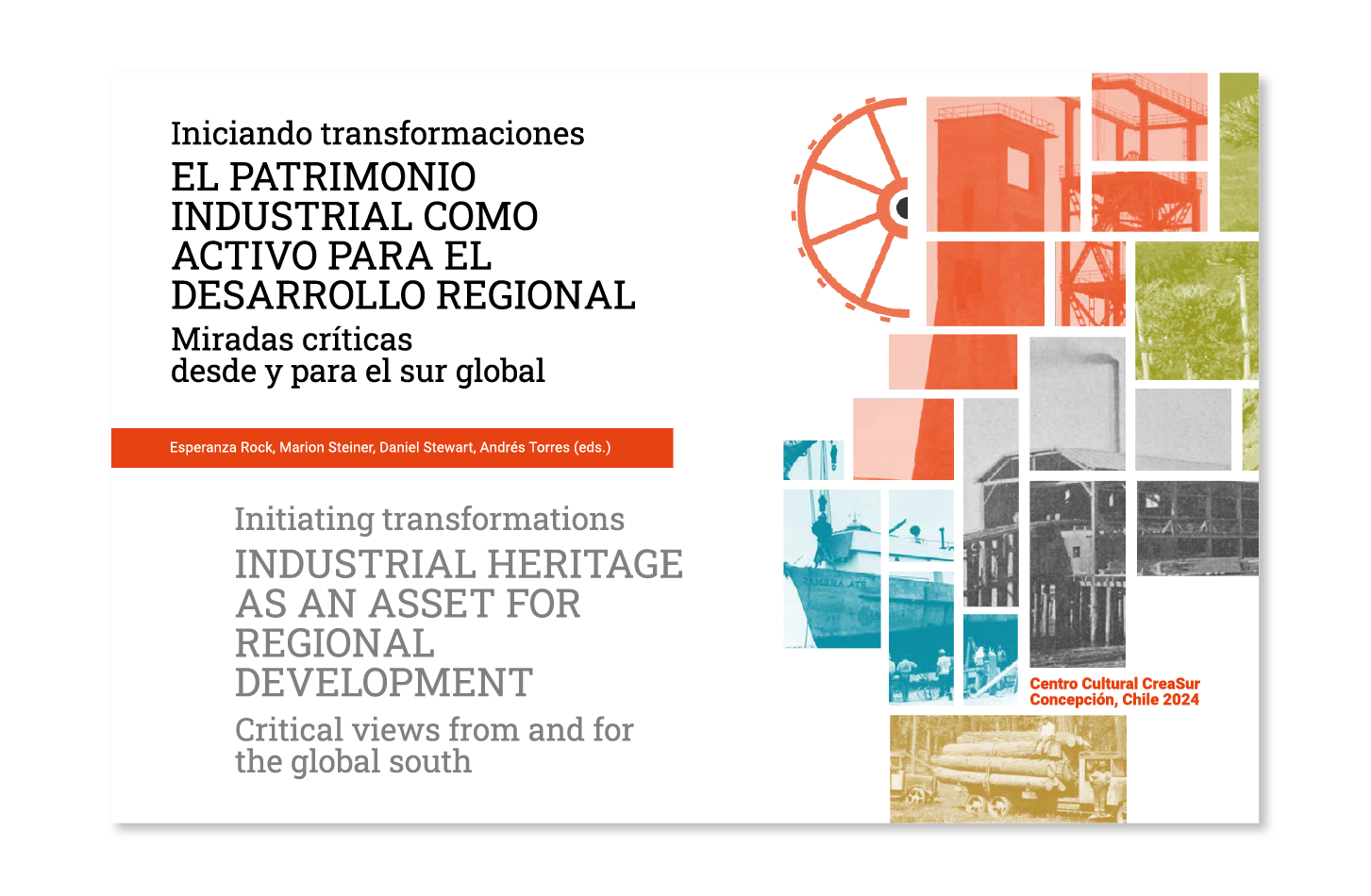
Initiating transformations
Industrial Heritage as an asset for Regional Development
Critical views from and for the global south
The Creasur Cultural Centre, thanks to funding from the Regional Development Fund of the Regional Government of Biobío, developed during 2023 the Programme Strategies for the Transformation of Industrial Heritage into a Regional Asset, which sought to position the cultural and industrial heritage of the Biobío region as a transformative engine towards regional development and identity.
To this end, it worked with the linking of academia, national and international organisations, public service and communities through the IV Congress on International and Interdisciplinary Cultural Heritage, the “Arts in Ruins” Festival and the Diploma Course “Collaborative Methodologies for Heritage Projects with a Critical Approach”. And currently, a Governance Network that allows for the alignment of research and work axes regarding Cultural Heritage in the region.
“The publication of this book is not only an important milestone in the closing of the programme “Strategies for the transformation of industrial heritage in the region” but also shows a national and international collaborative narrative where the focus of industrial heritage is returned to its protagonists, to the working communities and to the environment It also highlights the design and development of the programme which aimed to put regional industrial heritage on the world map of specialised areas of industrial heritage. This was achieved thanks to the virtuous articulation of the collaborative work of human networks from (agonistic) union between academia, public service, communities and the private sector. Showing once again that even in difficult contexts, we can achieve quality joint work. Solidarity, appreciation and respect for the industrial heritage goes beyond the industrial ruin and the development narrative, but rather positions itself from its communities and art,” says the programme director, Dr. María Esperanza Rock Núñez.
For his part, the Regional Governor of Biobío, Rodrigo Díaz Wörner expresses: “…It is our duty to preserve our history, and for it to still exist tomorrow, we must act today, together, in a coordinated and collaborative way to keep that part of what forged us, alive forever. The shared experiences of this programme allowed us to see that it is possible, that, faced with the same question we asked ourselves, people from different latitudes and longitudes found different answers. We had the opportunity to meet in our own Mural Room to share what challenges us in each of our realities; we were able to strengthen the technical teams that are in daily contact with our heritage and we managed to articulate all the spheres that participate, in one way or another, in the material preservation of our memory.
About the content
The book systematically presents the work carried out by CreaSur in collaboration with NUDISUR. The first chapter introduces the programme “Strategies for the Transformation of Industrial Heritage into Regional Assets”, in which different activities were carried out with the aim of identifying and promoting the transformation of the industrial heritage present in the Biobío Region, in order to turn it into an asset by attracting advanced international human capital and with the aim that their participation has a positive impact on the management of heritage governance.
The second chapter highlights the impact of the IV International and Interdisciplinary Cultural Heritage Congress on “Industrial Heritage: Social Issues and Challenges for New Governance”. This congress served as a strategic point to address current and future challenges in the management of industrial heritage with an emphasis on the critical and decolonial approach of the global North and South.
Diving into the cultural richness of the region, the third chapter highlights the Festival of Arts in Ruins, an artistic celebration that enhanced the congress, highlighting the valuable intangible heritage of the area, whose narratives provide proposals for the significance of the past.
Finally, the fourth chapter explores in detail the Diploma in Collaborative Methodologies for Heritage Projects with a Critical Approach, offering tools and perspectives for effective heritage management.
